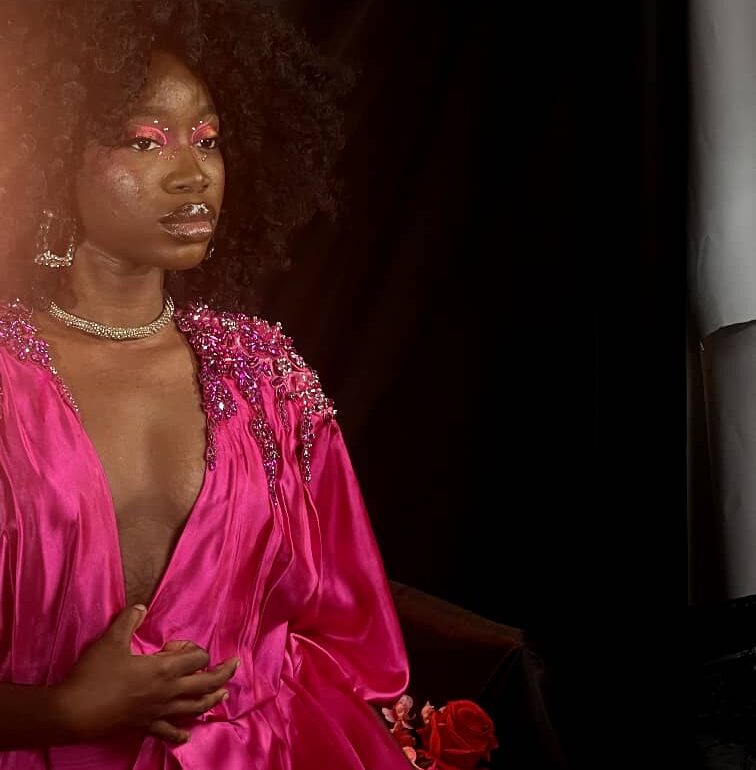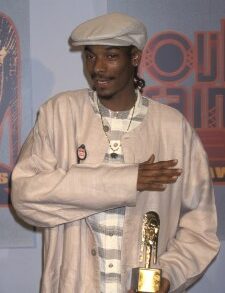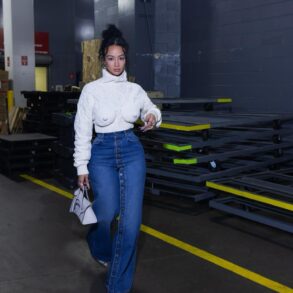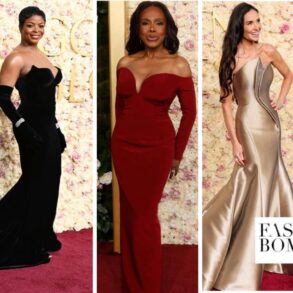Ayakeme Udokang typically listens to music as she works. Fittingly, music has brought her work its most attention yet.
In late March 2019, a crowd of about five thousand gathered at the swanky Transcorp Hilton, in Abuja, for an inaugural music show, the Caribbean Concert. They would be feted by the old and new of Nigerian music: by Styl Plus, but also by Burna Boy and Zlatan, the latter duo working the crowd into a bubbly froth with their new single, Killing Dem. Lesser-known Abuja-based acts like Sowa, Reeplay Sumting, and then-up-and-coming rapper Odumodublvck would also bound down the stage. Standing in the front row among the motile crowd was nineteen-year-old Ayakeme, then studying Tourism and Hospitality Management at Kwara State University. News headlines in the days that followed would laud the big stars, but for Ayakeme, Odumodublvck’s “energetic performance,” as she described it, was one of the night’s touchstones. When the show ended, the two would walk past each other in the venue’s parking lot; but they would not be on talking terms until three years later.
Now Nigerian Hip-hop’s poster child, Odumodublvck is known for his explicit lyrics and gruff, even belligerent delivery. To match his militant style, he has adopted the Okpu Agu as part of his public image, a headgear symbolizing bravery, traditionally worn by the Igbos of Nigeria. With its bobble and red and white stripes, it resembles Santa’s hat.
Due to its colonial history but also because it is an industrial-scale consumer of Western, particularly American culture, Nigerian society is often a syncretism of local aesthetics and those from beyond its borders. Its foremost music genre, Afrobeats, has roots in American RnB and Hip-hop. Its new-age movies are also wont to reprise Western tropes. And in its fashion industry, designers like Lisa Folawiyo, Deola Sagoe, and Mai Atafo have long blended Nigerian traditional designs with foreign ones, with the Ankara and Adire superimposed on jumpsuits, blazers, and bodycon dresses.
Nurtured in such a syncretic culture, it was natural then that Ayakeme riffed on the Okpu Agu, giving it a modern swagger. It retained its colors, but the knitwork would lose its conical shape as Ayakeme made it into a bucket hat, a street wear favored by American rappers in the 1980s. She had gotten the idea in 2020 from Seun Osho, a friend she met during her internship at Bantu Studios, an Abuja-based multimedia company. However, she wouldn’t put needle and thread to the idea until late 2022.
When GAEA LUMI—a streetwear fashion brand which Ayakeme founded in 2019—tweeted an image of an Okpu Agu-style bucket hat and balaclava combo, in August 2022, many called Odumodublvck’s attention to it, judging the design as befitting his aesthetic. Heeding the call, he would message Ayakeme privately, marking the start of a sartorial relationship that has significantly updated the rapper’s closet. He has now worn the new design as many times as the old one, making Ayakeme’s handiwork one of the most recognizable fashion items in Nigerian pop culture.
” data-medium-file=”https://i0.wp.com/culturecustodian.com/wp-content/uploads/2023/10/IMG_4030.jpeg?fit=225%2C300&ssl=1″ data-large-file=”https://i0.wp.com/culturecustodian.com/wp-content/uploads/2023/10/IMG_4030.jpeg?fit=768%2C1024&ssl=1″ decoding=”async” class=”wp-image-97546 size-full” src=”https://i0.wp.com/culturecustodian.com/wp-content/uploads/2023/10/IMG_4030.jpeg?resize=1200%2C1600&ssl=1″ alt width=”1200″ height=”1600″ srcset=”https://i0.wp.com/culturecustodian.com/wp-content/uploads/2023/10/IMG_4030.jpeg?w=1536&ssl=1 1536w, https://i0.wp.com/culturecustodian.com/wp-content/uploads/2023/10/IMG_4030.jpeg?resize=225%2C300&ssl=1 225w, https://i0.wp.com/culturecustodian.com/wp-content/uploads/2023/10/IMG_4030.jpeg?resize=768%2C1024&ssl=1 768w, https://i0.wp.com/culturecustodian.com/wp-content/uploads/2023/10/IMG_4030.jpeg?resize=1152%2C1536&ssl=1 1152w, https://i0.wp.com/culturecustodian.com/wp-content/uploads/2023/10/IMG_4030.jpeg?resize=1520%2C2027&ssl=1 1520w, https://i0.wp.com/culturecustodian.com/wp-content/uploads/2023/10/IMG_4030.jpeg?resize=760%2C1013&ssl=1 760w” sizes=”(max-width: 1200px) 100vw, 1200px” data-recalc-dims=”1″>
For Ayakeme, the impact she has had on popular culture is a source of rapture, but also proof of the possibilities of fashion.
“It’s a source of immense pride and excitement for me. It’s a reminder that fashion isn’t just about clothing; it’s a form of cultural expression. Contributing to pop culture in this way is incredibly fulfilling because it means we’re not just making clothes; we’re shaping and sharing a narrative that celebrates diversity and individuality. It’s a reminder of the meaningful impact that art and fashion can have on society, bridging cultures and generations,” Ayakeme told The Culture Custodian.
The fashion industry, both in Nigeria and elsewhere, has struggled to define the boundaries between inspiration and outright plagiarism. This has created a fertile ground for lawsuits and resentments, whether it’s Yves Saint Laurent suing Ralph Lauren in 1994 for copyright infringement, or Nigerian designer Elyon Adebe, in 2021, finding a replica of one of her crochet sweaters on Shein, the Chinese fast fashion magnate.
Observing this trend, Intellectual Property academic Eleanor Rockett described the fashion industry as one “with copying at its heart,” with many instances of fast fashion companies plundering designs from smaller direct-to-consumer brands and then selling them at cheaper rates. As Nigeria’s Constitution affords little intellectual property protection to fashion—it exempts works intended for mass production from being copyrighted—designers in the country have little hold on their creations.
Ayakeme recognizes this handicap, but isn’t worried about it, confident that her designs will stand out among the copycats it inspires.
“The idea has come to mind, but I also know how difficult it is to trademark design in fashion. My only hope is that people give me my flowers, or I take it by myself. But to copyright the design is not feasible. Not to sound cocky, but nothing beats the original design. Also, the Okpu Agu hats were inspired by what was already existing. I believe that’s something anybody can do. It just takes someone to do it first and do it right,” she said.
Although born in Lagos, Ayakeme grew up in Nigeria’s capital of Abuja, with her parents and two siblings. For her, fashion was always there, in her fashion designer mother who owned an atelier. During a gap year after secondary school, she would learn the minutiae of the trade—when she was not knitting or sketching designs, she ran errands for her mother, visiting markets to source fabrics. A self-taught crocheter, she would then intern with Bantu Studios, where she learned “the importance of networking.”
On graduating from university, she tried setting up shop in Lagos, but, being a newcomer with few friends in the city, felt out of place in the bustling metropolis. She returned to Abuja, where she feels a strong sense of community, and belongs to a number of enclaves of creatives. With her customized balaclavas, her work reflects the city’s zeitgeist. Abuja has a thriving Drill scene, comprising the likes of Eeskay, Zilla Oaks, and Tomi Obanure. Originating from the South Side of Chicago and crystallizing in the mid-2000s as a vibrant urban culture in the UK, Drill has also become recognizable for its fashion. The genre’s practitioners don masks and balaclavas, both as a fashion choice and a practical means of evading the police. The Abuja Drill scene is likewise awash with balaclavas, and Ayakeme contributes to that subculture, one thread of the needle at a time.
Fast fashion companies enjoy popularity for providing mass-produced wear at often cheap rates, but the environmental costs have been cause for worry. Such companies contribute significantly to global carbon emissions. Sprouting in the 1960s, the slow fashion movement exists in counterpoint to the popular industrial model, by proposing more eco-friendly approaches to reduce textile waste, carbon emissions and plastic pollution. Ayakeme’s GAEA LUMI follows this model, choosing sometimes to recycle old t-shirts and plastic bags in order to turn them into yarn.
The brand’s ecological ethos inspired one half of its name—GAEA refers to Gaia, an earth goddess in Greek mythology. The other half, LUMI, derives from Ayakeme’s Yoruba name, Pelumi.
“We cater to Nigerians who are fashion-forward. I want to describe our target customer base as ‘alté,’ but I’m also wary of the word.”
The term alté, or alternative, refers to the Nigerian subculture that emerged around 2009 with musical artists such as DRB LasGidi, Ajebutter22, Show Dem Camp, and Blackmagic. The movement would crescendo around 2016, with the rise of artists such as Odunsi (The Engine), Cruel Santino, and Lady Donli. Characterized by a rebellion against conventions, the alté culture transgresses popular standards in music and photography. The same disregard is extended to fashion, with many alté adherents snubbing modern styles in favor of those with Gothic and Y2K origins. Ayakeme’s alté side can be glimpsed in her skimpy designs which both reveal and accentuate the female form, a choice contravening Nigerian traditional expectations about feminine nudity. But Ayakeme has feminist impulses.
“I make them because I love making women look and feel beautiful in their bodies. But it’s just the same way I love making men look good.”
Ayakeme starts a design with a mental picture, and then throws herself into realizing it, sometimes for hours on end. When the end result doesn’t match her initial conceit, she starts afresh. It is backbreaking work that often cramps her hands while straining her eyes, but her love for her work keeps her going.
“Typically I like to envision each piece in my head before I break it down on paper. There’s a lot of measuring, counting and calculating involved in the process of creating a piece. Most of the materials I work with, apart from my crochet hook or knitting needles, include different types of yarn—velvet, cotton, mohair, t-shirt yarn. I’m planning to experiment with old jeans very soon.”
To ease the physical strain of the job, she has outsourced some of the work, with about five artisans in her employ since July. Andi, a twenty-two-year-old whom she met in 2021 through a mutual friend, also helps with running the brand, managing the social media accounts, sourcing clients, and drafting contracts. This has taught Ayakeme, who is now twenty-four years old, about the value in collaboration.
“I’ve learned that collaboration is the key. And not just collaboration within your niche, but even outside of it: with stylists, photographers, etc.”
Given the success of the Okpu Agu bucket hat, Ayakeme, who also has a background in modeling and communications, plans to retrofit more traditional designs. She also has her sights on the global stage.
“The Okpu Agu hat’s success has sparked ideas about retrofitting other traditional garments in the future. It has demonstrated the potential for revitalizing and reintroducing traditional clothing items in a manner that aligns with modern sensibilities. I’m also looking at GAEA LUMI being at the New York Fashion Week and Paris Fashion Week in two years’ time. I’m looking at GAEA LUMI being a household name by next year.”
Related Posts
This post was originally published on this site be sure to check out more of their content.








